We include here comments and statements from Maryland and Washington, DC-based Pan-Afrikan and progressive organizations, activists and commentators about the Capitol Siege of January 6, 2021 and what this may mean for Afrikan People and grassroots communities. As we receive more commentaries from truth-and-justice and Pan-Afrikan organizations, we will include them in this page.
Ujima People’s Progress Party
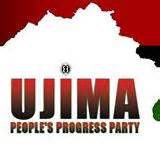 The Ujima People’s Progress Party (https://www.facebook.com/UPPMaryland/) is a Black worker-led independent political party based in Maryland. It is committed to Black people finding our own independent political voice, free from the capitalist control and influence of either the Democratic or Republican parties.
The Ujima People’s Progress Party (https://www.facebook.com/UPPMaryland/) is a Black worker-led independent political party based in Maryland. It is committed to Black people finding our own independent political voice, free from the capitalist control and influence of either the Democratic or Republican parties.
January 8, 2021, 7:00 AM
Statement on far-right rebellion on U.S. capital and the escalating crisis in the U.S. capitalist ruling class.
These are dangerous times for Black people. Yesterday’s assault by far-right white nationalist elements on the U.S. capitol while senators attempted to ratify the votes of the 2020 electoral college has reminded us all that Donald Trump’s defeat does not mean the Black community is now safe.
Millions of people watched as hundreds of far-right forces stormed the capitol building in an attempt to force a coup that would allow Donald Trump to remain in power. Despite the death of one protester and arrest of 50+ rioters, this attack happened with muted and sluggish responses from police agencies. We are painfully aware that had similar actions in Washington D.C. come from members of the Black community, that our people would have been brutally put down by that state, and hundreds would be arrested.
This conflict is not a crisis of democracy as put forward by ruling class media; instead, this is a crisis in the capitalist ruling class that has busted out into rebellion in the streets. The unity of white supremacist domination of the economic, political, and social structures of the U.S. nation is in great danger because capitalist exploitation has increased for all workers, and sectors of the white working-class have been mobilized by contending capitalist forces to demand their cut at the expense of all other workers.
The incoming Biden administration inherits the immediate task of trying to solve how to hold the union together. It has only two basic options to choose from in dealing with these unleashed far-right capitalist forces: move to suppress and defeat them by force or make economic, political, and social concessions to appease them.
The far-right shows that their perceived suppression will be met with resistance and open conflict that could split the white ruling class. Appeasement of these forces will come by implementing austerity allocating resources away from Black, Brown, and oppressed communities and into rust belt and heartlands of America. Neither option will make it safe or comfortable for the Black community to move forward in the wake of Trump’s departure.
The actions by the state to allow the far-right forces to storm the capitol lets us know that the state apparatus under the Biden administration will not be able to protect the Black community from physical or political attacks by elements of the far-right.
Black working-class people must organize for their economic & class interests. We must build the capacity to protect our interests, communities, and our very lives in lieu of the fact that the racist U.S. state continues to fail us as a people and as a class.
We must be organized, and we must build independent Black political action. We must better define for potential allies what they must do to align themselves with our movement for power and true liberation. It is not acceptable o continue to tail the liberal and so-called progressive wings of capitalist parties and activities.
We cannot afford to wait for the Biden administration, the Democratic party, and especially America to conclude that Black power matters; we must do this for ourselves and with the allies we choose.
Askia Muhammad
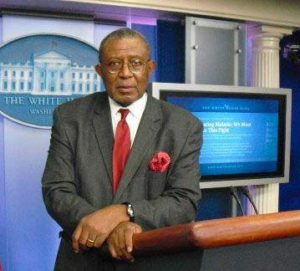 Washington, DC’s Askia Muhammad (https://www.facebook.com/askiaaa) is a veteran print and broadcast newsman, journalist and commentator. He has been a mainstay of Pacifica Radio’s WPFW-FM in Washington, DC for several decades.
Washington, DC’s Askia Muhammad (https://www.facebook.com/askiaaa) is a veteran print and broadcast newsman, journalist and commentator. He has been a mainstay of Pacifica Radio’s WPFW-FM in Washington, DC for several decades.
This brief but to-the-point commentary on our neglect of the increasing right-wing resurgence in the media was written January 8 at 6:06 PM.
Over the decades, we’ve watched public attention to wacko white nationalists morph from Goldwater, to Nixon, to Reagan, to Bush, to the Tea Party, to the Freedom Caucus, to Q-Anon, to the Boogaloo Boys, to the Proud Boys, to #45; each one becoming more toxic than the one who went before.
But with Black folks, we’re still mostly focused on, and eager to applaud “first Negroes” integrating this-that-or-the-other field of endeavor; entertainers, or athletes, sex symbols–boobs and abs–and folks accumulating mo’ money, mo’ money, mo’ money; with each “success” we cheer simply a reflection of that someone winning the approval of and acceptance into the White, Neoliberal establishment by being more acquiescent than the Blood who went before.
Baltimore People’s Power Assembly
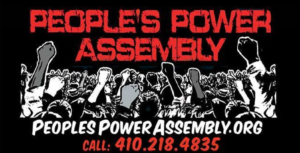 The Baltimore People’s Power Assembly (https://www.facebook.com/PeoplesPowerAssembly) grew out of the All People’s Congress, which had established itself as a multi-racial, progressive organization in East Baltimore in the 1980’s through the early 2000’s. It works through direct action campaigns, political education teach-ins and public meetings and supports efforts to fight police brutality, exonerate and release political prisoners, stamp out institutional racism and pressure government and political officials to enact more progressive, people-centered domestic and foreign policies.
The Baltimore People’s Power Assembly (https://www.facebook.com/PeoplesPowerAssembly) grew out of the All People’s Congress, which had established itself as a multi-racial, progressive organization in East Baltimore in the 1980’s through the early 2000’s. It works through direct action campaigns, political education teach-ins and public meetings and supports efforts to fight police brutality, exonerate and release political prisoners, stamp out institutional racism and pressure government and political officials to enact more progressive, people-centered domestic and foreign policies.
Coup attempt: Is the danger over?
January 7, 2021, by Sharon Black
Jail Trump, his fascist mob, and killer cops
The storming of the U.S. Capitol by white supremacists incited by President Trump, which temporarily halted the certification vote, had to have the collusion of multiple federal police agencies. It is implausible that there was no preparation when these very events had been telegraphed for months by Trump himself. “Civil War January 6, 2021” was printed on the MAGA sweatshirts; this was no secret. The only way that the racist mob could freely occupy the Capitol is if the police made a deliberate decision to let them.
The world watched while armed fascists carrying Confederate flags and metal battering rams breached metal detectors, held Congress hostage, took over offices, smashed windows, openly carried ladders to scale the Capitol, posed for selfies with police and were eventually escorted out of the building without arrest.
Two pipe bombs were confiscated, along with weapons and ammunition, and four people are reported dead. A KKK-inspired noose was erected on the west end of the Capitol.
This was reminiscent of how the Alabama authorities allowed the Klan to attack the freedom riders in Anniston, Ala., on May 14, 1961, nearly killing several people. Local police did nothing for at least 15 minutes.
The storming of the Capitol was consciously in the tradition of the previous overthrow of the democratically elected, majority-rule Reconstruction governments in South Carolina, Mississippi, Louisiana and the rest, which culminated in the coup and massacre in Wilmington, N.C., in 1898.
Contrast this with Kenosha, Wis. In anticipation of community anger at the refusal to indict police in the shooting of Jacob Blake, streets were shut down and the National Guard was mobilized in advance of the acquittal.
What happens next, is the danger over?
Biden’s extremely weak response is deeply problematic in terms of pushing back the fascists and what it means for the future. Rather than making a call for disbanding the fascist thugs, the racist mob or arresting Trump, Biden called for unity.
Unity with who and for what?
Here was an opportunity for Biden and the Democrats to strike a definitive blow against Trump and the movement he has spawned. He could have called for Trump’s arrest or made an appeal for people to mobilize against the racist and reactionary threat. He didn’t.
In many respects it was a betrayal of the Black voters, especially in Georgia, who courageously resisted racist threats to vote against racism and reaction.
The timidity of Biden and the Democrats is not surprising.
What underlies these developments and girders the fascist reaction is the contraction of the capitalist economy and the deep decay and crisis of the system. While seemingly hidden, it supersedes the will of capitalist politicians who attempt to represent one section or another of the ruling class.
It is an important lesson. The capitalist class, regardless of its divisions, has no will to put these racist scum in the dustbin of history. Like the bankers and businesses that were financing Hitler up to the last bullet, they are hedging their bets. They are reluctant to crush them.
Danger of imperialist war in the next 14 days
We would be seriously amiss to not state the obvious threat of imperialist war most immediately aimed at Iran, but ultimately — regardless of which administration is in office — directed at any country that seeks to chart an independent course from imperialism — whether it is Venezuela, China, the Democratic People’s Republic of Korea or Cuba. See the call for emergency response actions.
There are still 14 days before the Jan. 20 inauguration. Just as we demand the jailing of killer cops, we must mobilize the movement to call for the immediate arrest of Trump and stop the white supremacist mobs.
Trump should not only be arrested but also extradited for war crimes. Trump is now wanted by Iraq for ordering the assassination of Iranian Gen. Qassim Soleimani and Iraqi Commander Abu Mahdi al-Muhandis; Iran has also issued an arrest warrant through Interpol (International Criminal Police Organization) for the same crime.
The antidote to fascism is workers’ solidarity and socialism
While billionaires are raking in unprecedented profits, cashing in while the deaths of COVID victims piles up, the vast majority of the people are finding themselves living in deeper misery. Capitalist governments have not been able to stop the COVID pandemic and have failed miserably at providing health care for the vast majority. Widespread unemployment threatens not only low wage workers but also the middle class. Millions are facing evictions, foreclosures and utility shutoffs.
Traditionally it is the middle class, the small business owners, and others like them who are isolated and in despair, who are duped by fascist ideology. It is only a strong, united anti-capitalist and anti-racist working-class movement that can pull them away from such an destructive dead end.
“Such a situation can only exist in periods of extraordinarily acute social crisis when the capitalist state is so torn by accumulating inner contradictions and weakened by its inability to overcome its social crisis that it inevitably gives way to extra-parliamentary, extra-legal forms of rule,” Sam Marcy said of the struggle against fascism.
It will take the organization of the broad working class and the leadership of its most oppressed, Black, Brown, Latinx, Indigenous, Arab, Asian, women and LGBTQ2S people, to both develop a defense of its own class interests and place socialism on the agenda.

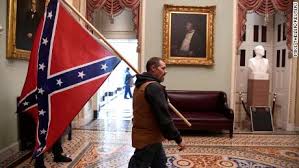

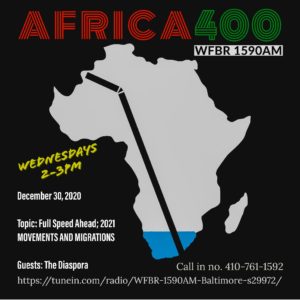
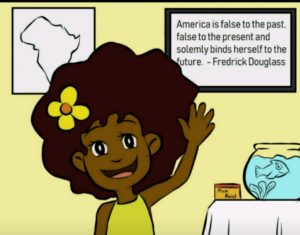 Also, Mama Tomiko and Baba Ty welcome author Shonta Watson to open up the show, discussing her new book, part of the Shea Buttah & The Herbal Kids series™️ that is available now, ready for Kwanzaa. Her Web site is
Also, Mama Tomiko and Baba Ty welcome author Shonta Watson to open up the show, discussing her new book, part of the Shea Buttah & The Herbal Kids series™️ that is available now, ready for Kwanzaa. Her Web site is 
 The December 23, 2020 edition of Africa400 marked the approach of 20 years of
The December 23, 2020 edition of Africa400 marked the approach of 20 years of 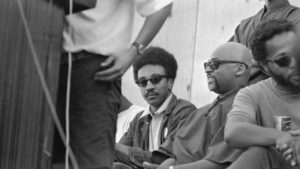 imprisonment for Political Prisoner Imam Jamil Al-Amin, who was once known as H. Rap Brown.
imprisonment for Political Prisoner Imam Jamil Al-Amin, who was once known as H. Rap Brown. 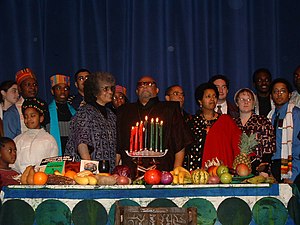 Dr. Karenga wrote an April
Dr. Karenga wrote an April 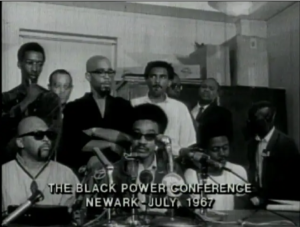
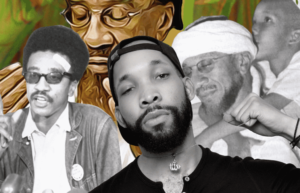
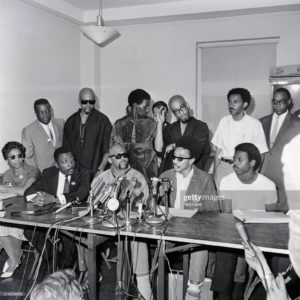 Africa400 can be listened to on the radio in the Glen Burnie and Baltimore, Maryland areas on 1590-AM WFBR. The show is also streamed over the Internet on a variety of platforms, most notably on
Africa400 can be listened to on the radio in the Glen Burnie and Baltimore, Maryland areas on 1590-AM WFBR. The show is also streamed over the Internet on a variety of platforms, most notably on
 We now receive regular news and updates from a variety of sources related to African issues. RSS Feeds from the African Union, United Nations and news service AllAfrica.com bring you the most recent news stories from Africa and the World Stage. Check out our
We now receive regular news and updates from a variety of sources related to African issues. RSS Feeds from the African Union, United Nations and news service AllAfrica.com bring you the most recent news stories from Africa and the World Stage. Check out our 

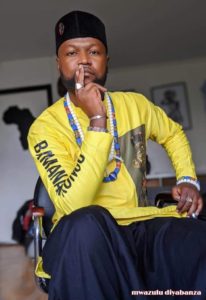 ENGLISH/ENGLAIS
ENGLISH/ENGLAIS

 The November 25, 2020 edition of Africa400 explored the topic of “The Awakening: Children of the Light”.
The November 25, 2020 edition of Africa400 explored the topic of “The Awakening: Children of the Light”.